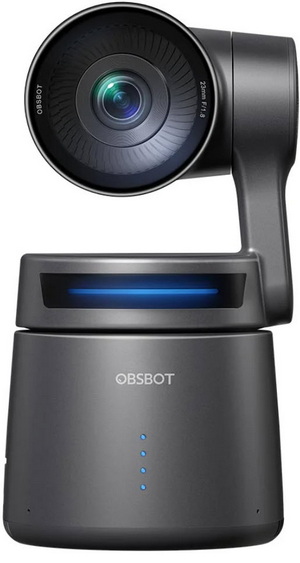INTRODUCTION

Action cameras that can also be used as webcams is not a new concept and have been a thing for many years now allowing regular users and of course content creators to use them as they see fit. Between however the lack of PTZ (pan, tilt, zoom) function, tracking, digital zoom and remote access and use (at least for most action camera models) they’ve left a large gap in the market, one which OBSBOT aims to fill with their brand new crowdfunding success, the Tail Air AI Powered 4K PTZ Streaming Camera.
Founded in 2016, OBSBOT is an innovative imaging technology and hardware brand dedicated to using new technologies such as AI to inject new vitality into the videography market. With the artificial intelligence as the core, OBSBOT focuses on the application research of new technologies in the field of videography. It hopes to use revolutionary technology and innovative products to innovate the way of public records and image creation, and to change people's social way.
The latest Tail Air is a model OBSBOT has invested loads of time and money into and so its specifications and features lists are a lot longer than for example even the Tiny 2 model which I reviewed a while back and found to be very good (review here). So, in the metal alloy body of the Tail Air OBSBOT has squeezed an 1/1.8-inch CMOS sensor with a 3856x2176p resolution (can capture video at 4k@30fps/1080p@60fps in H.264/H.265 and with HDR) and a total of 8 optical lenses (f/1.8 aperture, 2μm macro pixel size, 100-6400 ISO range, 4x digital zoom), 2-axis motorized gimbal (±160 degrees pan, ±90 degrees tilt function), 6-axis gyroscope (stable picture), built-in dual omni-directional MEMS mics (AAC, PCM formats supported) and a 1500mAh lithium polymer rechargeable battery pack (up to 154 minutes of use). In terms of available connectors OBSBOT has equipped their latest Tail Air with Bluetooth v5.0, Wi-Fi 2.4/5.8G, micro-HDMI port (smooth video output), microSD slot (up to 512GB UHS-I speed grade 3 and above), 3.5mm TRS connector (for use with wired/wireless microphones and receivers), magnetic bottom interface (for use with their own 360-degree charging dock) and a data/charge USB-C port. The Tail Air also shares many of the AI features found with the Tiny 2 model (such as tracking zones, different usage modes, gesture and voice control and even a beauty mode which includes skin retouching, body parts reshaping and several filters – can test in the VR area of the software) but it also offers something entirely new, support for NDI/HX3 (you will however need to pay extra for the license) which basically allows you to link up to 3 such cameras and send low-latency video feed over the network, either wirelessly or via an optional PoE+ compatible ethernet adapter. On paper the Tail Air certainly seems fantastic and miles ahead from anything similar in the market but is it really the AI camera to get?

 O-Sense
O-Sense









